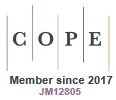RD24178Ovarian culture with mouse serum improves follicle development compared with fetal bovine serum, showing the importance of as yet unidentified factors in follicle growth
 , Eleanor R. Stephens
, Eleanor R. Stephens  , Babatomisin V. Adeniran
, Babatomisin V. Adeniran  , Omar F. Ammar, Ava S. Harrison, Belinda KM Lo
, Omar F. Ammar, Ava S. Harrison, Belinda KM Lo  and Suzannah A. Williams
and Suzannah A. Williams 
For blood cancer survivors, a fertility preservation treatment generating eggs in culture by using their own cryopreserved ovarian tissue does not yet exist. This could be due to culture media missing crucial factors that exist in the circulation. We showed that mouse ovarian follicles do indeed grow better in culture supplemented with mouse serum. By identifying that there are additional factors in mouse serum that improve mouse ovarian follicle development, this paves the way to identify these molecules, which would likely be informative for humans. Image by Sabriya Abdul Kader.
This article belongs to the collection: The biology of the ovary – Honouring the contributions of Ken P McNatty and Rex J Scaramuzzi.
RD24178 Abstract | RD24178 Full Text | RD24178PDF (6.1 MB) Open Access Article



















